The Weekly Anthropocene, June 26 2024
Weaving wildlife bridges in Brazil, China's seven solar super-giants, drones in Vietnam rice paddies, AI crop breeding in Senegal, U.S. EVs getting cheaper, the American Climate Corps, and more!
Brazil
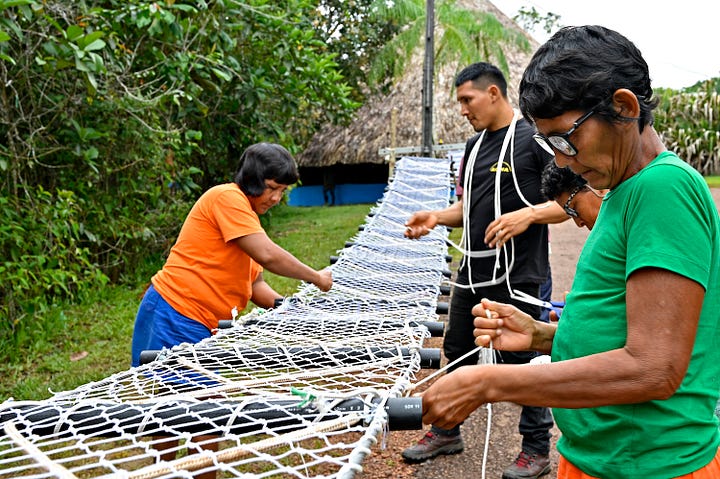
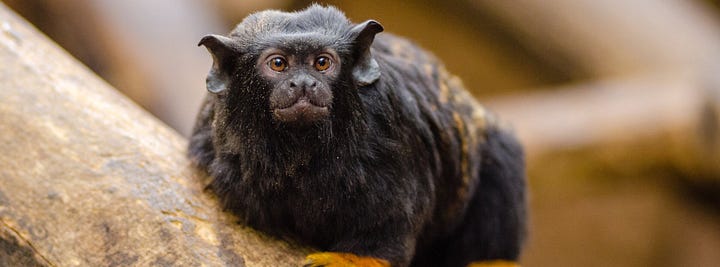
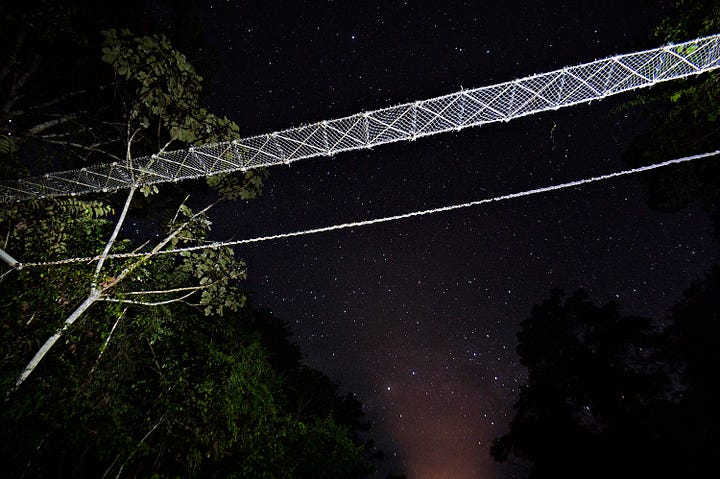
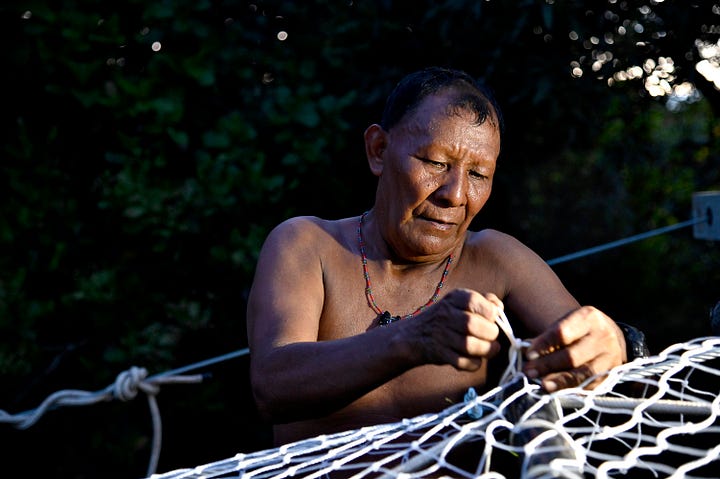
The Reconecta Project and the Waimiri-Atroari indigenous people are working together to deploy woven animal-crossing bridges to allow wildlife safe passage over BR-174, a highway through the Brazilian Amazon in the states of Amazonas and Roraima. 30 bridges were deployed in 2022, with camera traps observing successful use by many species and identifying the most popular designs for future efforts. One beneficiary was the golden-handed tamarin (Saguinus midas), pictured above.
Next up, the Reconecta Project is planning to build dozens more bridges over the nearby BR-319 highway, as well as farther afield in the Brazilian states of Mato Grosso and Mato Grosso del Sul and the country of Suriname! This work is creating critical “ecosystem infrastructure” to make human-wildlife coexistence possible. Awesome!
China
According to Bloomberg calculations, the seven largest Chinese solar companies are now providing substantially more energy to humanity than the West’s more famous “Seven Sisters” oil companies. Solar panels generally last for over two decades and produce electricity that whole time, so when you take the entire lifespan into account, each year the seven big Chinese solar manufacturers manufacture panels that will produce much more usable power than the “burn once and it’s done” oil pumped by major companies in the same time period. (This is also why the Inflation Reduction Act’s work to build up an independent U.S. solar industry is so vital - President Biden is working to ensure that we can compete in the fast-growing energy sectors that will dominate the rest of the century). Another milestone in the dawning Age of Solar!
Tanzania
In the fields of Tanzania, the International Center for Tropical Agriculture is running the Artemis Project, a Gates Foundation-funded mission using AI to rapidly breed more climate-resilient crops. Small-scale farmers can use the project app to send in pictures of their crops, which the AI can then analyze, speeding up traditionally human judgment-based “phenotyping” work to assess which individual plants should be bred to produce higher yields and provide plant placement recommendations.
“Traditionally it takes around 10 years to develop a new crop variety. But given the pace of climate change, this timeframe is no longer viable…
Computers can count every flower or pod, from every plant, every day without getting tired. This is really important as the number of flowers in bean plants correlate to the number of pods which directly influence yields.”
- David Guerena, International Center of Tropical Agriculture
This is really really important work! Increasing agricultural productivity in impoverished, climate-vulnerable sub-Saharan Africa is one of the most important tasks in the world, and this could be a scalable way to make that happen. A few years down the road, this project or its descendants or analogues could join malaria vaccines and satellite weather forecasting as a mega-life-saver, driving profound human progress despite a more turbulent heat-filled atmosphere. Onwards!
And around Mnemba Island in Tanzania’s Zanzibar Archipelago, community conservation efforts are successfully restoring battered coral reefs, with local divers tending underwater coral nurseries and steel and stone artificial reefs being built as new foundations for transplanted coral fragments to grow upon. Excellent work!
Senegal
Researchers have rediscovered the presence of the endangered giant pangolin (Smutsia gigantea) in Senegal’s Niokolo-Koba National Park, with a 2023 camera trap survey spotting the species for the first time in Senegal since 1999. Longtime readers may recall that Niokolo-Koba is the same park that’s recently seen rising lion and leopard populations as well thanks to improved protection efforts. Great work!
Vietnam
Rice paddies in Vietnam are increasingly using AI-equipped drones for precision application of pesticides and fertilizers, which works faster while saving money and reducing runoff into the Mekong River.
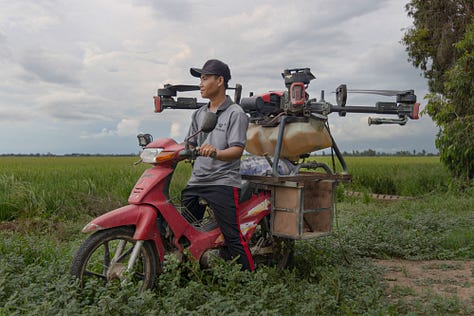
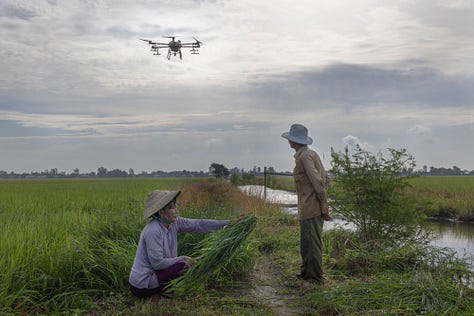

Some freelancers now offer mobile drone services to multiple farmers, arriving at different sites by boat and motorcycle. According to one estimate, there may be as many 4,000 agricultural drones currently at work in the fast-developing Southeast Asian nation. Farming in the Anthropocene is full of surprising innovations!
Trinidad and Tobago
In the Caribbean island nation of Trinidad and Tobago, an “immigrant species” from India is helping protect against extreme weather. Vetiver grass (Chrysopogon zizanioides) builds very thick and strong root networks1 that serve as a low-cost way of holding soil together, preventing erosion and landslides and creating a path for rainwater to seep deeper into the soil and reduce flooding. The plant can also be woven into mats or used to produce a fragrant oil. As Trinidad sees increased heavy rainfall and flash flooding, and may soon fall into an expanding “hurricane belt” in warming seas, ongoing efforts to spread this grass will help literally hold landscapes together. Another great example of strategically introducing a new species to do good!
United States
The Biden Administration has achieved an unprecedented level of support for the fast-growing American electric vehicle industry, from Inflation Reduction Act tax credits providing up to $7,500 off for EV buyers to producer-focused incentives kicking off a new green industrial revolution in clean manufacturing.
And it’s working! EVs in the U.S. are becoming cheaper and better at the same time, with longer-lasting battery ranges and lower prices2. Bloomberg recently reported that several EV models with 300-mile battery ranges now cost less than the average new U.S. car, even before taking federal EV incentives into account.
This progress is set to continue; the overall EV premium is shrinking, with the average U.S. EV now about 15% pricier than the average U.S. car, and the International Energy Agency forecasts that EVs will achieve price parity with combustion-engine cars within six years. Ford is currently developing a line of more affordable EVs, with a model priced around $25,000 set to debut in late 2026. They’ll likely join a recently announced electric Jeep and a new Chevy Bolt, both in the same $25,000 price range.
The Biden Administration’s careful cultivation of an independent U.S. EV industry is paying dividends! Excellent work; now let’s stay the course.
The U.S. Congress has unexpectedly passed the ADVANCE Act with overwhelming bipartisan support, making it easier to build next-generation advanced nuclear reactors (like the one in the works in Wyoming). Faster permitting for clean energy is finally getting the attention it deserves - and it may yet bring the long-moribund U.S. nuclear industry into a decarbonization-assisting renaissance!
Mississippi just opened the 41-turbine 184 MW Delta wind farm, which will provide power to the local grid and nearby Amazon data centers. This project is notable for several reasons: not only is it Mississippi’s first-ever utility-scale wind farm, but its cutting-edge Vestas wind turbines are the tallest yet built in all of America, reaching 692 feet at the blades’ highest point. Also, this wind farm coexists with 14,000 acres of farmland,3 and uses a unique, specially built foundation design to stay upright in the swampy soil. Great work!
Vermont, which suffered major flooding in summer 2023, has now passed America’s (and the world’s!) first-ever “climate superfund law,” in which fossil fuel companies will be held financially responsible for a share of the damage from climate disasters. This will likely start a major legal battle for the small state, but could be the start of an extraordinary sea change if other U.S. states join them in passing such polluter-pays laws. Stay tuned!
Hawaii has reached a historic and unprecedented settlement with a group of young people suing the government for inadequate response to climate change. Hawaii’s state constitution explicitly enshrines a right to a clean and healthy environment, and the plaintiffs successfully argued that the state Department of Transportation was prioritizing gas-powered cars that contributed to air pollution and climate change. The liberal state government just signed an agreement committing to spend $40 million on building out EV chargers by 2030, as well as completing new walking, biking, and transit routes.
These kind of “youth climate lawsuits” seemed to go nowhere for years, and now it looks like some are finally paying off - in a big way! Spectacular work.
The first-ever members of President Biden’s new American Climate Corps were sworn in on June 18, 2024. The farsighted program is set to create 20,000 paying jobs in its first year (with most openings requiring no prior experience!) for young Americans to work on paying jobs in its first year for young people to work on clean energy, conservation and climate resilience projects. Awesome!
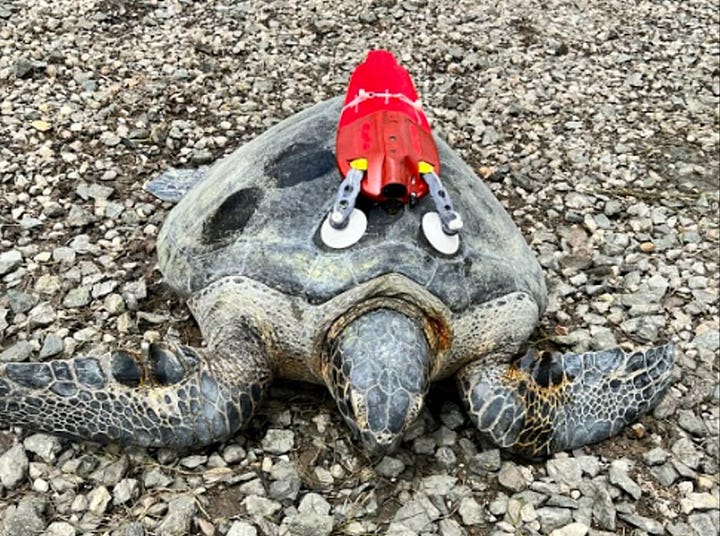

A new study placed cameras on green sea turtles (Chelonia mydas) in San Diego Bay, unveiling surprising sociability within a human presence-adapted population of an endangered species generally seen as non-social. Cameras on 11 turtles observed 18 clearly social interactions with other turtles in just 73 hours of observation time. Interestingly, the study also found that San Diego sea turtles seem to be using human structures like buoy chains as “scratching posts,” and sometimes congregate together at human-made structures.
These are urban sea turtles in more ways than one: not only are they living in a human-dominated area, they’re living more closely with each other. Fascinating news!
One study found that the tensile strength of vetiver root is about one-third the tensile strength of steel.
Note that this is different from China’s recent massive EV price declines and ensuing wave of cheap EV exports to Europe. Chinese EVs are not currently available for sale in America due to tariff barriers and national security concerns, and they don’t benefit from IRA incentives. Basically, China is supporting their EV industry and President Biden is building up an independent American EV industry, plus both are riding the wave of massive global advances in battery technology.
This is one big reason why viral stats about how much land renewable energy takes up are so misleading: all of that land counts as part of the wind farm, but the actual turbines occupy a tiny amount of surface area - it’s a farm at the same time!

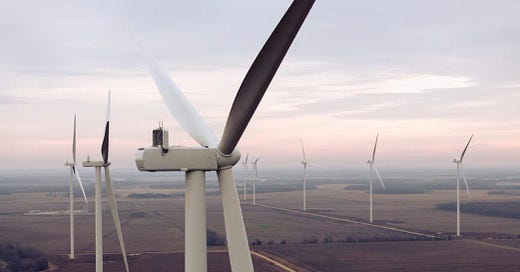



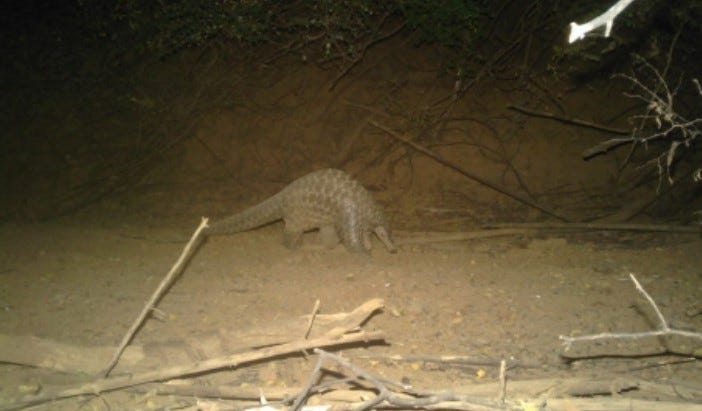





Another great issue. That vetuvdr grass is amazing! China continues to surprise with their foresightedness. I like the return of advanced nuclear design initiatives. The most exciting news for me was the AI assisted crop engineering. Eating is a necessity that underlies every other human effort after all. 🙂
Love the positivity in this issue! Keep up the great reporting!